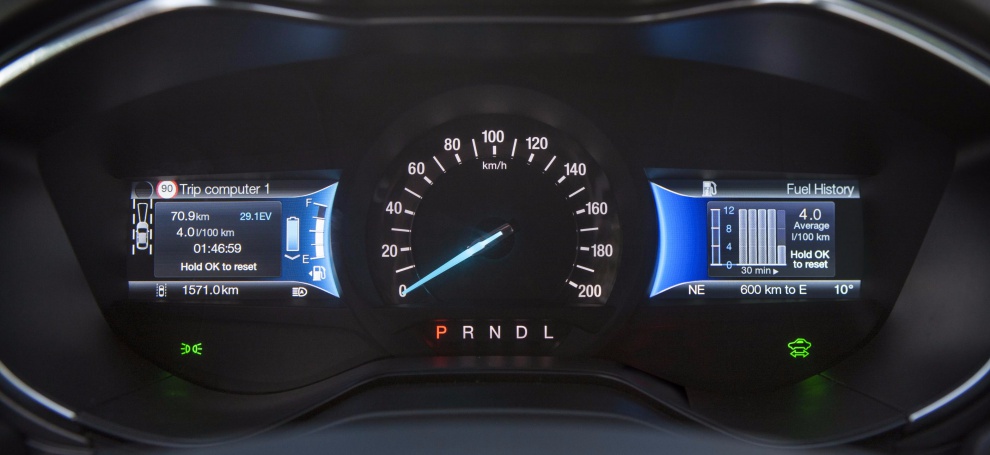Technological trends in the industry of connected cars

Our cars are getting smarter. From applications to maps, recording maintenance data and beyond. So what can we expect in the future?
We witnessed monsters like Google , Apple and Nokia becoming interested in connected cars , and this trend will be relevant in the future.
')
For example, chip developers, such as Nvidia , have received new sources of income, as now their products are used for infotainment panels, and Google is rumored to work with Android car equipment, which will allow the company to accept Apple’s call from her carplay; Microsoft also introduced its concept of "Windows in the Car".
Infotainment and Mobile
The idea of using mobile devices to stay connected on the road, browse maps and listen to playlists is very tempting, but in many countries it is believed that by distracting from gadgets, the driver will create dangerous situations on the road, and therefore this practice is prohibited. Nevertheless, there are ways by which the use of mobile devices while driving can be made at least a little safer - for example, thanks to wireless Bluetooth and voice commands. Another method used in the next generation of vehicles is the infotainment panel that connects the car and the phone, giving drivers access to a number of applications and services. Although experts note that this is a rather controversial version of the solution to the driver’s distractibility.
Many technology companies began to cooperate with automakers, trying to do everything possible so that we could use telephone services in cars. The result of this collaboration can be called Apple's CarPlay, as well as solutions such as Jaguar's Just Drive, a voice recognition system that uses Intel technology in its infotainment panels .
Applications, applications everywhere
Realizing that infotainment can be a source of huge revenues in the young entertainment industry, developers release applications for drivers, from weather reports to maps with notes of drivers and traffic jams. Most likely, in the future, this trend will only develop, as automakers and technology companies rely on connected cars.
Tracking the movement of inexperienced drivers
For most parents, a teenager’s first trip at the wheel of a car is a very exciting and even alarming event. To solve these problems, Hyundai has developed the Blue Link Vehicle Safeguards Alerts In-Vehicle application for the Azera 2015; it is expected that soon there will be versions for other cars.
The free app connects the Hyundai car to the parents' smartphone and allows them to control the use of the car, set speed limits, hours of operation and movement around the area. If the child goes beyond the speed limit or takes the car without permission, the parents receive the appropriate SMS message or email, or both.
As the number of connected cars grows, Hyundai is unlikely to remain the only car manufacturer that develops such applications.
Fuel efficiency
Ford’s fuel-saving technology may make drivers less likely to use traditional fuels. This can happen by changing their driving habits. As demonstrated at Ford’s EcoDrive event, indicators on a car’s dashboard can be used to calculate real-time fuel consumption, which can result in changes in driver behavior while driving. There are also ways to help reduce fuel consumption, including reducing the overall weight of the car, quickly changing gears, but if you have a special indicator that will remind you that you can reduce the amount of fuel consumed, it can really help you reduce overall fuel use and the costs of it.
Blind areas and parking
Phones with built-in cameras have become commonplace, and it is therefore not surprising that this appears in our cars. Today, in some cars, the notorious blind zone and the need to turn left and right when parking is already in the past, in particular, in the latest Chrysler models, there are already built-in sensors and cameras . When parking a car, a camera is turned on, which shows the driver a rear view on the front of the car.
Digital diagnostics
Infoteynment, mobile devices and visual clues for drivers are all useful, but vehicle maintenance — and lack of it — can lead to excessive overloads and breakdowns and problems during driving. Automakers solve this issue by connecting cars to the Internet and to their production systems, which allows you to connect sensors that check everything - from tire pressure to the state of the brakes. Now the warnings on the dashboard may not be enough, and connected cars can warn drivers even before minor problems become a serious breakdown and problem.
e-call
In accordance with the new European laws, all new cars on the road must be equipped with sensors that automatically call emergency services in case of an accident. Thus, European lawmakers want to make sure that by 2018 all new, modern cars will be equipped with these types of sensors.
Cars without drivers
Fully automated cars without drivers are unlikely to become ubiquitous in the near future, but this did not prevent technology giants like Google and automakers like Volvo from experimenting with this technology. More and more car manufacturers are developing systems for intelligent driving. Example - “Intelligent Drive” from Mercedes-Benz or BMW i . Designed to reduce accidents, the system can take control of the car and control it, brake and accelerate by itself, if the speed is less than 37 mph - all this with the help of sensors, cameras and a special radar system.
Not a car
It is worth remembering that cars are not the only means of transport in which we could benefit from the Internet and new technologies in general. Most likely, such concepts will appear in everything - from trucks to motorcycles (for example, in motorcycles a tracking system may appear for corporate cars in Bluetooth and GPS installations). Such products are already beginning to appear on the market, including the Skully helmet , which uses Bluetooth, GPS and a rear-view camera.
Source: https://habr.com/ru/post/367303/
All Articles